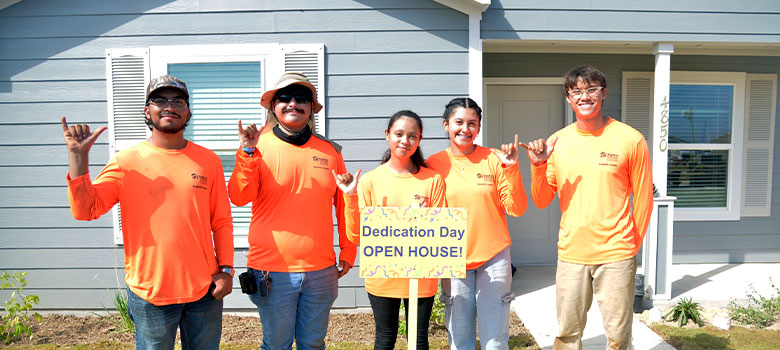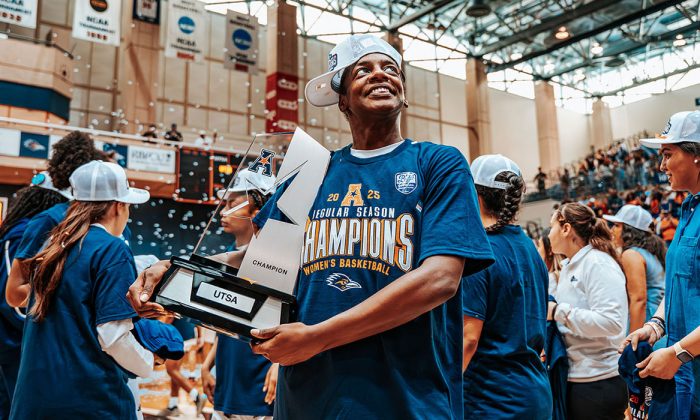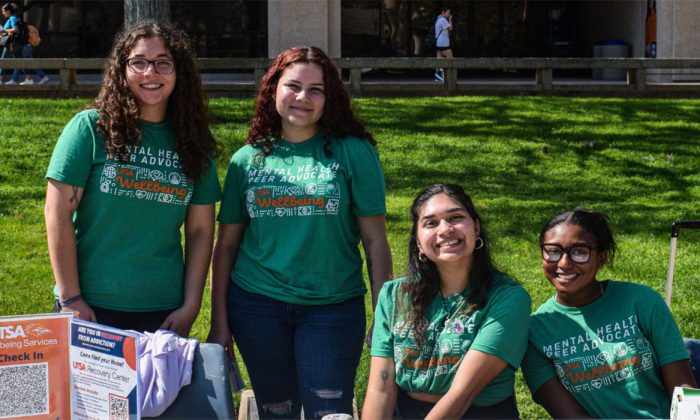AUGUST 13, 2025 — The nonprofit homebuilding organization, Habitat for Humanity of San Antonio & Guadalupe Valley , each year puts out a call for a dozen interns to help out on its work sites — six from various high schools and six from area colleges.
This year’s six college interns for the summer program are UTSA students from the Margie and Bill Klesse College of Engineering and Integrated Design. It is the first time Habitat has chosen the entire group from one institution.
“We didn’t exclusively go to UTSA to get them,” said Stephanie Wiese , Habitat for Humanity chief development officer. But, “because UTSA has such a strong engineering and construction program , it just makes sense that many of our interns come from UTSA.”
It’s challenging for many interns to find jobs in construction, engineering or architecture while they’re still in school, she said. The Habitat internship gives them that opportunity.
“UTSA has such a strong engineering and construction program, it just makes sense that many of our interns come from UTSA.”
— Stephanie Wiese

Real-world solutions
The UTSA interns include Danya Martinez, Nahageny Black, Hernan Villarreal, Juan Mejia, Sofia Tovar and Caleb Moore .
Black, a junior construction management major, grew up working with her father as a carpenter in Bastrop and learned early about framing houses, proper painting techniques and how to avoid stripping screws. But she’s already learned new skills during her internship, she said.
“I have learned how to build walls, use a caulk gun, plane wood, write a job hazard analysis, and present job safety tips to my peers before the work has begun,” Black said.
Martinez, a senior civil engineering student, said she hopes to apply what she learned in the classroom to real-world situations, particularly in a way that benefits the community.
“I want to see how engineering concepts translate into real structures,” she said. “This internship is giving me insight into the social responsibilities of engineers and how our work can influence lives [in] our community. It is also helping me develop both technical and soft skills — everything from construction fundamentals and safety practices to communication and leadership.”
Dependability and reliability
In the Habitat internship, students learn hands-on construction skills in addition to oral communication, listening, initiative, follow-through, teamwork, maturity, leadership, empathy, and a commitment to community service.
“This is, in some cases, their first job, so we’re teaching them dependability, reliability, the ability to plan, organize, and manage their time,” Wiese said. “The hope is that by the end of the internship, every student will make the most of this opportunity. What’s going to make it most successful for them is whether they take their learning by the reins and make the most of this.”
Habitat builds up to 60 houses a year with multiple houses under construction in various stages, Wiese said. The interns work with volunteers on 10 to 15 houses, but will build one home from start to finish, and be present when the keys are handed to the owner.
“Homeownership is so important to lower-income families,” Wiese said. “Habitat is trying to do that, and we need the community’s help. That’s why we’re proud of our partnership with UTSA. Not everybody is going to be in a field where they’re sitting behind a desk, and I think it’s great that UTSA has such a strong program that can meet students’ needs and be able to help them learn how to be good in construction and engineering.”



